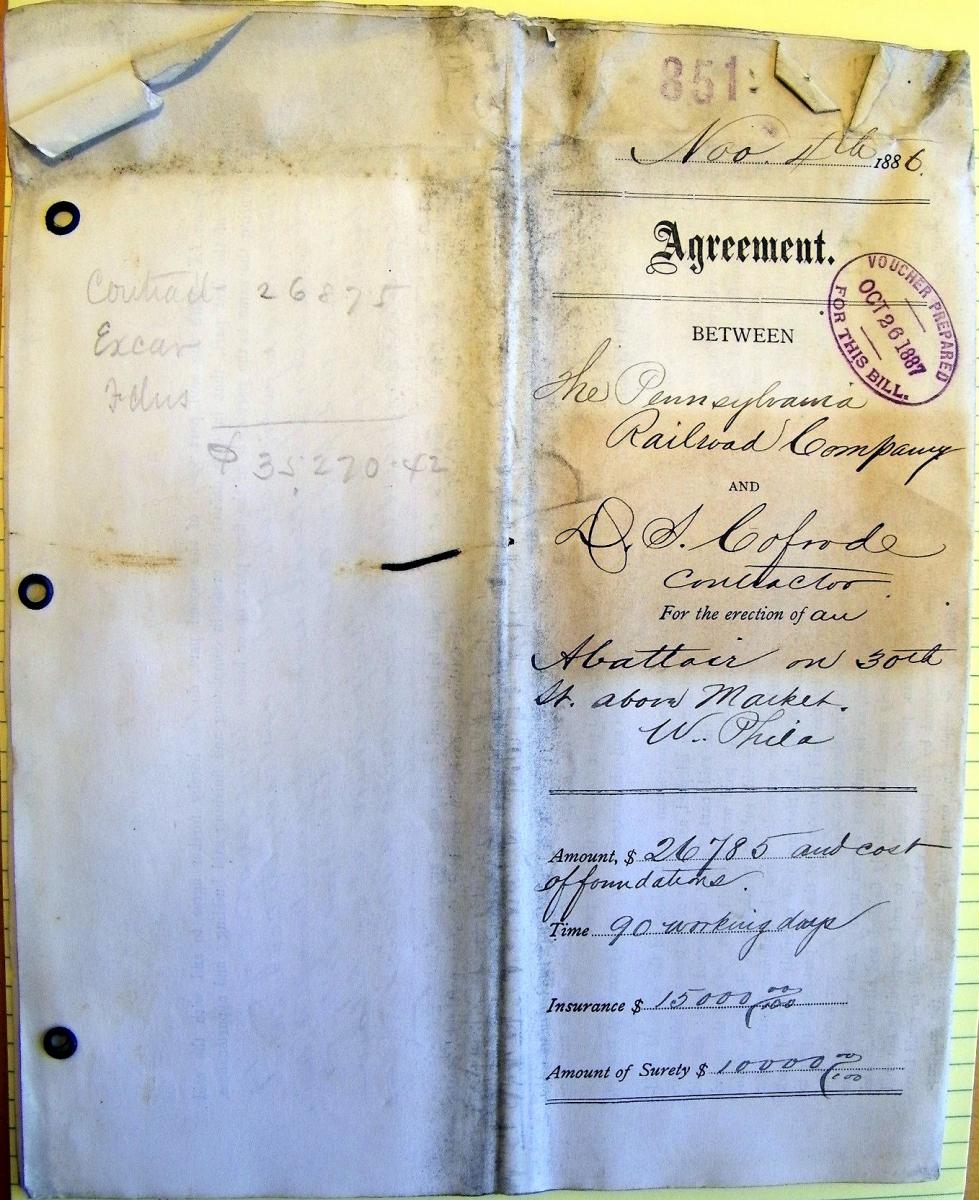My recent research at Hagley Library dealt with the role of railroad construction contractors in the development of the American building construction industry in the nineteenth century. The genesis of this project was comments by Alfred Chandler in his classic The Visible Hand (1977): he wrote that the mid-nineteenth century railroad boom was “a basic impetus to the rise of the large-scale construction firm.”
I say Chandler’s “comments” because, in his 600+-page book, he devotes just a few paragraphs to this idea. As someone who researches construction firms and the construction industry, I was surprised by his claim since I had not come across any railroad contractor turned urban builder. Moreover, Chandler offered little supporting evidence. Nevertheless, he may have gained some insight from his extensive research; perhaps he had an intuition, which might, on examination, turn out to be correct.
I devised a project to test the idea. A first step was finding railroad contractors from the period Chandler referenced and exploring what kind of work they did. There were many railroads under construction from the mid-nineteenth century on. I limited the scope of my project to Philadelphia and eastern Pennsylvania; Pennsylvania Railroad (PRR) was the representative railroad and Philadelphia the representative urban center, where you might expect a railroad contractor turned urban builder to operate. I then tracked down PRR construction contractors.
An invaluable source of information on contractors was the collection of construction contracts in the Pennsylvania Railroad Company’s business records at Hagley Library. The contracts are part of the records of the Office of Chief Engineer. These contracts – for grading, buildings, structures, and the like – typically include the names of the contractors, their place of business, a description of the work, and start and end dates for projects.

The finding aid for the collection gives the date range of 1862-1906 for the contracts. However, the material consists of what was retrieved after Conrail took it over the PRR, and not all PRR contracts within this date range survived. None of the PRR earliest contracts (before 1862) are in this collection; likewise, there are few contracts from the early end of the date range. I collected data from the earliest contracts and a sample of later ones (through the early 1890s) for projects in the eastern part of Pennsylvania and the Philadelphia region. From these contracts, I found the names of many contractors and the kinds of work they did. I then used other sources (e.g., local histories, trade periodicals) to learn what I could about the careers of these men (and all were men).
This research has resulted in one publication so far – an article about railroad contractors, presented at an international Construction History Congress – and I am now at work on a second article, which addresses Chandler’s proposition specifically, aimed at business historians.
Sara E. Wermiel is a research affiliate with the Massachusetts Institute of Technology, and an instructor in the preservation studies program at Boston University. Dr. Wermiel’s research has received support from the Hagley Center for the History of Business, Technology, and Society.
